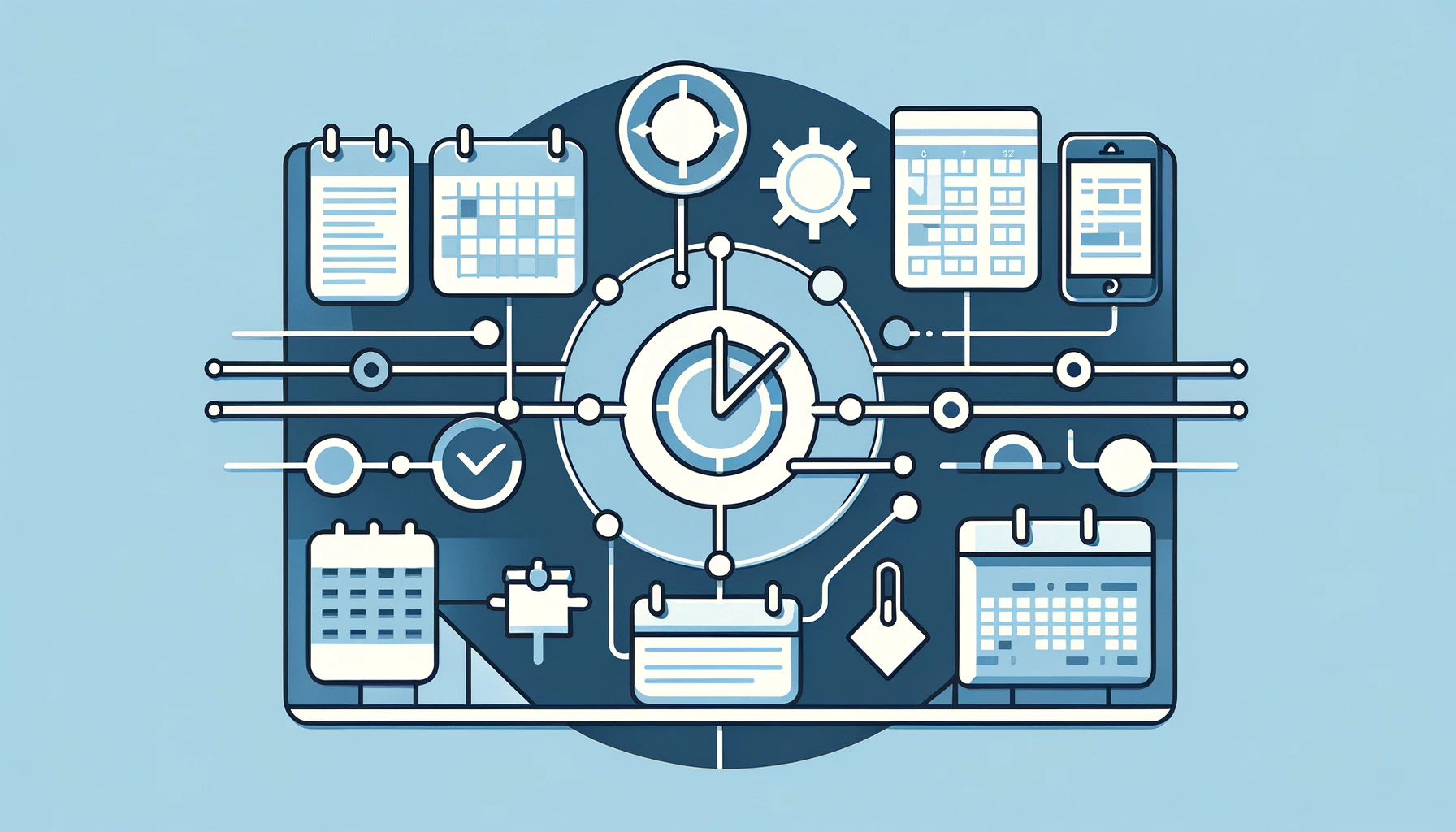In a world where technology customizations are not just valued but expected, the process of planning custom solutions becomes an art as much as a science. This blog delves into the meticulous planning stages crucial for crafting successful custom technology solutions, focusing on understanding both client needs and user experiences. From analyzing the target audience to setting clear project objectives and creating detailed user flow diagrams, each step is pivotal.
We navigate through the complexities of resource allocation, risk management, and the importance of detailed documentation, underscoring the role of thorough planning in achieving innovation tailored to specific needs.
The Art of Needs Analysis of custom solution planning

At the heart of any successful custom solution planning lies a deep understanding of the client’s needs and objectives. This phase, known as the needs analysis, is critical in aligning the project’s goals with the client’s vision. It involves comprehensive discussions to unearth not just the immediate requirements but also the long-term aspirations of the project. Engaging in this dialogue allows for the identification of specific functionalities, user experiences, and outcomes desired, ensuring the final product is not only functional but truly bespoke and aligned with the client’s strategic goals.
The needs analysis stage is critical in custom solution planning. It requires in-depth discussions, stakeholder interviews, and user feedback sessions to thoroughly understand the client’s specific requirements and goals. This meticulous approach ensures the solution is precisely tailored to address both explicit needs and underlying issues, establishing a strong foundation for a project that aligns with the client’s strategic objectives and delivers impactful, focused outcomes.
Target Audience Analysis
Following the needs analysis, the next crucial step is Target Audience Analysis. This process involves identifying and understanding the specific group of users or customers for whom the solution is being developed. It’s about diving deep into their demographics, preferences, behaviors, and pain points. Understanding the target audience ensures that the custom solution not only meets but exceeds user expectations, by tailoring features, user interface, and overall experience to match their specific needs and usage patterns, ultimately enhancing user engagement and satisfaction.
Behavioral Patterns
Observing the target auidenece usage frequency, loyalty to brands, decision-making processes, and the triggers that motivate them to choose one solution over another. By analyzing these patterns, you can tailor the custom solution to fit seamlessly into the users’ lives, addressing their habits and preferences directly. This insight ensures that the solution not only meets the functional needs but also resonates with the users on a behavioral level, encouraging adoption and long-term engagement.
Pain Points
In the journey of custom solution planning, identifying and understanding the pain points of the target audience is a critical step. Pain points are the specific problems, frustrations, or challenges that the target audience faces in their daily operations or interactions with existing solutions. By thoroughly analyzing these pain points, planners can tailor the custom solution to directly address and alleviate these issues, thus creating a product that not only meets but also exceeds user expectations.
Preferences and Expectations
Preferences can range from user interface designs to the types of interactions the solution enables, while expectations often encompass performance, reliability, and the overall impact on the users’ daily activities or business operations. This stage requires a careful balance between what is technically feasible and what can genuinely enhance the user experience.
Gathering this information may involve detailed questionnaires, focus groups, and usability testing with prototypes. The aim is to build a comprehensive understanding that guides the custom solution’s development in a way that not only solves existing problems but also resonates with the users on a personal or professional level, ensuring adoption and satisfaction.
Creating User Flow Diagrams
Creating User Flow Diagrams is an essential step in the custom solution planning phase of custom technology solutions, serving as a bridge between understanding the target audience’s pain points, preferences, and the actual design and development process. User flow diagrams visually map out the paths a user takes within the application or system, from the initial entry point through various interactions to the final outcome or goal. These diagrams are crucial for several reasons:
Clarity and Direction
They provide a clear visual representation of the user’s journey, helping the development team understand the sequence of actions and the logic behind the navigation.
Identifying User Experience (UX) Challenges
By mapping out the user flows, potential usability issues, such as overly complex navigation or unnecessary steps that could frustrate users, can be identified early on.
Enhancing User Satisfaction
They allow for the design of a more intuitive and efficient interface that aligns with user expectations and preferences, ultimately leading to a more satisfying user experience.
Facilitating Communication
User flow diagrams serve as a valuable communication tool among team members and with stakeholders, ensuring everyone has a unified understanding of the project goals and user needs.
Streamlining Development
They provide a blueprint for developers, reducing ambiguity and the potential for rework by clearly outlining the required functionalities and interactions.
Creating user flow diagrams involves several steps, starting with defining the different user personas and their objectives. Next, each persona’s entry points into the system are identified, followed by the actions they are likely to take, the decisions they need to make, and the endpoints or goals they aim to achieve. Tools like flowchart software or even simple sketches can be used to create these diagrams, with the complexity of the diagram varying based on the project’s scope.
By carefully crafting user flow diagrams, teams can ensure that the custom solution is designed from the outset to meet the target audience’s needs effectively, making it an indispensable tool in the planning phase.
Resource Allocation and Timeline Planning

After establishing a clear understanding of the user’s journey through flow diagrams, the next crucial phase in custom solution planning a custom technology solution is Resource Allocation and Timeline Planning. This stage is pivotal for ensuring that the project is feasible within the constraints of budget, personnel, and time. Here’s how to approach this phase effectively:
Identifying Resources
Begin by listing all the resources required for the project, including human resources (developers, designers, project managers, etc.), technology (software licenses, servers, development tools), and any other materials or services needed.
Budget Allocation
With the list of resources in hand, allocate the budget accordingly. It’s important to have a clear financial plan that covers all aspects of the project, including a contingency fund for unforeseen challenges.
Team Assembly
Based on the project’s requirements, assemble a team with the necessary skills and experience. Consider the complexity of the project and the need for specialized knowledge in areas such as UX/UI design, backend development, and database management.
Timeline Development
Develop a detailed project timeline that outlines key milestones, deadlines, and dependencies. Utilize project management methodologies like Agile or Waterfall, depending on the project’s nature and the team’s working style, to create a flexible and realistic timeline.
Risk Assessment and Contingency Planning
Identify potential risks to the project timeline and resource availability, such as technical challenges, team availability, or external dependencies. Develop contingency plans to address these risks, ensuring that the project can stay on track even when unexpected issues arise.
Regular Review and Adjustment
As the project progresses, regularly review the allocation of resources and the project timeline. Be prepared to make adjustments as needed, reallocating resources or revising timelines to accommodate project developments and ensure successful completion.
Detailling Documentation
Following meticulous resource allocation and timeline planning, the next step in the custom solution planning phase for custom technology solutions is detailing documentation. This step is fundamental for ensuring clarity, consistency, and alignment across the project team and stakeholders. Effective documentation serves multiple purposes, from serving as a reference point throughout the development process to facilitating onboarding and knowledge transfer. Here’s how to approach this phase:
Project Scope and Requirements: Begin with a comprehensive document that captures the project scope, including detailed requirements, objectives, and the solution’s intended outcomes. This document should be clear and detailed, providing a solid foundation for all subsequent planning and development efforts.
Technical Specifications: Develop technical specifications that detail the technology stack, architecture, data models, APIs, and any third-party services integration. This documentation should be sufficiently detailed to guide the development team but flexible enough to accommodate necessary adjustments.
User Flow and Design Documents: Incorporate the previously created user flow diagrams into the documentation, accompanied by design wireframes or mockups when available. These visual documents are crucial for ensuring that the development aligns with the intended user experience and design aesthetics.
Development Plan: Detail the development plan, including sprint schedules, key milestones, and deliverables. This document should align with the project timeline and resource allocation, serving as a roadmap for the development process.
Testing Strategy: Outline the testing strategy, specifying the types of testing to be conducted (e.g., unit testing, integration testing, usability testing), criteria for success, and the tools and environments to be used. This ensures that testing is systematic and aligned with project objectives.
Deployment and Maintenance Plan: Prepare a document outlining the deployment strategy, including the steps for releasing the solution to production, as well as the plan for ongoing maintenance, updates, and support.
Conclusion
In conclusion, the meticulous planning of custom technology solutions is a multifaceted process that lays the foundation for successful project execution. Starting with a thorough needs analysis, moving through understanding the target audience, and progressing into the creation of detailed user flow diagrams, each step is crucial for aligning the project’s goals with the user’s needs and expectations. The subsequent phases of resource allocation and timeline planning, alongside detailing comprehensive documentation, ensure that the project is grounded in reality, with clear expectations for deliverables and timelines.
Effective planning is not just about foreseeing the development path; it’s about setting a strategic course that addresses user pain points, leverages resources efficiently, and anticipates risks, all while keeping the end goal in sight. This proactive approach ensures that the custom solution not only meets but exceeds the desired outcomes, delivering value to the users and achieving business objectives.
As technology continues to evolve and user expectations grow, the importance of detailed planning in the development of custom solutions cannot be overstated. It is the blueprint that guides teams from concept to completion, ensuring that every step is purposeful and every decision is informed. With a solid plan in place, businesses can navigate the complexities of custom solution development, paving the way for innovative, effective, and impactful technology solutions.






